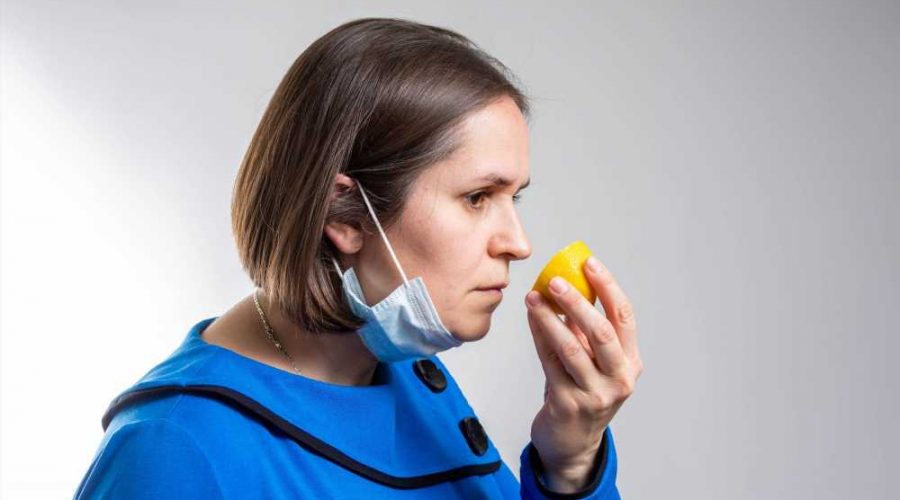Study explores olfactory dysfunction in long COVID patients
A recent study published in the Journal of American Medical Association (JAMA) Network Open described the sociodemographic features and comorbidities of patients with long COVID and olfactory dysfunction.

Long COVID could be described as signs and symptoms persisting for two weeks or longer after coronavirus disease 2019 (COVID-19). More than 50 long-term effects have been identified, with pulmonary dysfunction, fatigue, neurologic disorders, anosmia, and abnormal chest radiographs being the most prevalent. Olfactory dysfunction is one of the most common neurologic symptoms among long COVID patients. Persistent anosmia is observed in 23% of acute COVID-19 patients.
It remains unclear whether COVID-19-associated olfactory dysfunction is reversible, and less is known about its long-term impact. Depression, reduced quality of life, and disturbances in eating behavior are linked to chronic olfactory disorders. Individuals with prolonged olfactory dysfunction experience difficulty maintaining health/nutritional status, social relationships, personal hygiene, and cooking. Determining the type, characteristics, and severity of olfactory dysfunction is critical for prognosis and treatment.
About the study
In the present study, researchers described the clinical and sociodemographic characteristics of long COVID patients with persistent olfactory dysfunction. It was conducted among subjects enrolled for a long COVID follow-up program at a Brazilian public university in the Amazon. Patients with long COVID had a history of usual COVID-19 symptoms during the acute phase.
Participants were not vaccinated before COVID-19. Adults (18 years or older) were enrolled via electronic forms, contacted for neurologic consultation, and assessed from September 9, 2020, to October 20, 2021. Excluded participants were those with a history of neurologic disease/surgery and head trauma.
The team accessed electronic medical records for clinical and sociodemographic information such as education, sex, health history, income, symptoms, ageusia, and anosmia post-COVID-19. The sense of smell was evaluated using the Connecticut chemosensory clinical research center (CCCRC) test, comprising threshold and odor identification tests. The CCCRC score was the cumulative score of threshold and odor identification tests ranging from zero to seven.
Participants were considered to have anosmia if the CCCRC score was less than 1.75 and normosmia if the score was six or seven. Additionally, the association between olfactory dysfunction and daily life activities (food preparation and intake, personal hygiene, hazard detection ability, work disturbance, and social relations) was evaluated via a questionnaire.
Findings
The final analytic sample comprised 219 patients, predominantly females (74.9%), with a mean age of 43.2 years. Most patients (94.1%) completed more than nine years of education, and 52.5% of patients had a monthly income of up to USD 192. Eighty patients had normosmia, while the remaining patients had some olfactory dysfunction.
Hospitalization rates were not significantly different between patients with normosmia and those with olfactory dysfunction. Participants with olfactory dysfunction exhibited symptoms for a significantly long period since COVID-19 onset relative to those with normosmia. There were significantly more participants with neurologic symptoms lasting six months or longer in the olfactory dysfunction cohort than in the normosmia cohort.
More patients in the normosmia cohort had headaches, anxiety, and sleep disorders than those with olfactory dysfunction. In contrast, the olfactory dysfunction group had more patients with ageusia. Food preparation, hazard detection ability, and personal hygiene were the life activities associated with olfactory dysfunction.
Univariable logistic regression of clinical and epidemiologic characteristics showed an association between olfactory dysfunction and ageusia and an inverse association of olfactory dysfunction with headache and sleep disorders. Multivariable logistic regression revealed a significant association between olfactory dysfunction with ageusia. Notably, non-hospitalization during the acute COVID-19 phase was significantly associated with severe olfactory dysfunction.
Conclusions
Anosmia was the most common neurologic symptom observed among long COVID patients. Individuals with post-COVID-19 olfactory dysfunction could exhibit varying degrees of olfactory loss even a year after symptom onset. Logistic regression revealed that ageusia was the sole risk factor associated with olfactory dysfunction.
The authors found a long-term association of olfactory dysfunction with daily life activities, particularly among those with anosmia. The findings reaffirm that olfactory dysfunction is an important long-term neurologic symptom of COVID-19; it is most prevalent among adults, primarily females and outpatients. Further research is required to determine if olfactory dysfunction is a chronic or permanent sequela.
- Mendes Paranhos AC, Nazareth Dias ÁR, Machado da Silva LC, et al. (2022). Sociodemographic Characteristics and Comorbidities of Patients with Long COVID and Persistent Olfactory Dysfunction. JAMA Network Open. doi: 10.1001/jamanetworkopen.2022.30637 https://jamanetwork.com/journals/jamanetworkopen/fullarticle/2795995
Posted in: Medical Science News | Medical Research News | Disease/Infection News
Tags: Anosmia, Anxiety, Chronic, Consultation, Coronavirus, covid-19, Depression, Education, Electronic Medical Records, Fatigue, Food, Head Trauma, Headache, Hygiene, Research, Sleep, Sleep Disorder, Surgery, Trauma

Written by
Tarun Sai Lomte
Tarun is a writer based in Hyderabad, India. He has a Master’s degree in Biotechnology from the University of Hyderabad and is enthusiastic about scientific research. He enjoys reading research papers and literature reviews and is passionate about writing.
Source: Read Full Article
